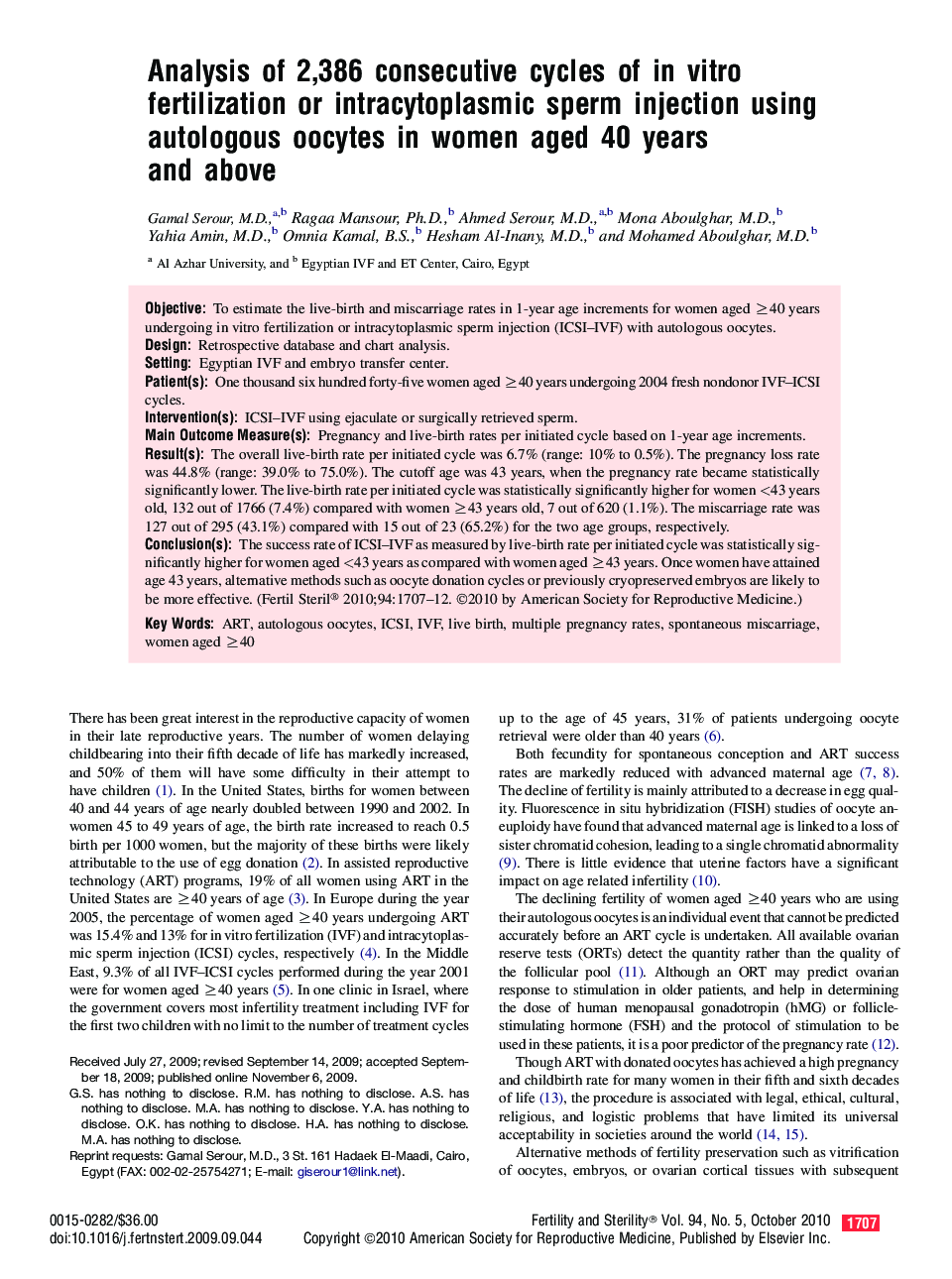| Article ID | Journal | Published Year | Pages | File Type |
|---|---|---|---|---|
| 3940483 | Fertility and Sterility | 2010 | 6 Pages |
ObjectiveTo estimate the live-birth and miscarriage rates in 1-year age increments for women aged ≥40 years undergoing in vitro fertilization or intracytoplasmic sperm injection (ICSI–IVF) with autologous oocytes.DesignRetrospective database and chart analysis.SettingEgyptian IVF and embryo transfer center.Patient(s)One thousand six hundred forty-five women aged ≥40 years undergoing 2004 fresh nondonor IVF–ICSI cycles.Intervention(s)ICSI–IVF using ejaculate or surgically retrieved sperm.Main Outcome Measure(s)Pregnancy and live-birth rates per initiated cycle based on 1-year age increments.Result(s)The overall live-birth rate per initiated cycle was 6.7% (range: 10% to 0.5%). The pregnancy loss rate was 44.8% (range: 39.0% to 75.0%). The cutoff age was 43 years, when the pregnancy rate became statistically significantly lower. The live-birth rate per initiated cycle was statistically significantly higher for women <43 years old, 132 out of 1766 (7.4%) compared with women ≥43 years old, 7 out of 620 (1.1%). The miscarriage rate was 127 out of 295 (43.1%) compared with 15 out of 23 (65.2%) for the two age groups, respectively.Conclusion(s)The success rate of ICSI–IVF as measured by live-birth rate per initiated cycle was statistically significantly higher for women aged <43 years as compared with women aged ≥43 years. Once women have attained age 43 years, alternative methods such as oocyte donation cycles or previously cryopreserved embryos are likely to be more effective.
